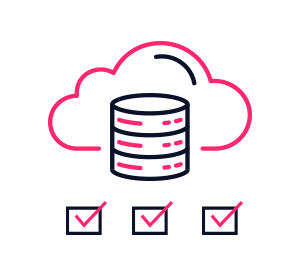As your business explores cloud-based solutions for database management, it’s important to evaluate the limitations and implications of different cloud Platform as a Service (PaaS) offerings. While these solutions promise convenience and scalability, they often come with constraints that can impact your control, performance, and overall efficiency. If these constraints are too significant, you might find a cloud Database as a Service (DBaaS) option more desirable. Here are key considerations to keep in mind when evaluating cloud PaaS options:
-
Forced Database Upgrades and Automatic Patching
If you adopted a PaaS solution, would you be prepared for forced database upgrades and patches with no notification ahead of time and no control over the version you’re running? Cloud database PaaS solutions typically push users to the latest database versions or apply patches without allowing them to control the upgrade process. This can lead to compatibility issues with existing applications and disrupt business operations.
-
Feature Limitations
Many cloud database PaaS offerings do not support the full functionality of traditional on-prem databases, potentially lacking essential features. This can hinder your ability to fully leverage your database capabilities. Notable examples include Azure SQL Database, Azure SQL Managed Instance, Google Cloud SQL, and Azure RDS.
-
Capacity and Performance Constraints
Cloud database PaaS solutions often impose strict limitations on performance and capacity, including multiple millisecond latencies, low Input/Output Operations Per Second (IOPS), and throughput caps. These can seriously affect your application’s responsiveness and user experience. Meanwhile, storage capacities max out between 16 and 64 TB, which might not be sufficient for growing businesses and lead to costly workarounds or additional services.
-
Multi-Database Support
Do you need to leverage cloud database PaaS for more than one type of database? If your business uses multiple database engines, it’s important to know that cloud database PaaS solutions may not support all types. When they do, each instance usually needs to be managed separately, which can prevent you from benefiting from economies of scale.
-
Limited VM Instance Types
You probably didn’t know that cloud database PaaS limits the virtual machine (VM) instance types available for your databases. Limited VM instance types can restrict your ability to optimize performance and cost since you might not be able to choose the most suitable VM shapes for your specific workload requirements.
-
Unannounced Hypervisor Changes
If there would unannounced changes to the hypervisor, would you be able to manage any potential disruptions? Changes to the hypervisor layer without notice can lead to unexpected downtime and compatibility issues, disrupting business operations.
-
Monitoring and Tuning Limitations
Cloud database PaaS solutions have major monitoring and tuning limitations. For example, they often offer only automated monitoring and tuning, limiting your ability to fine-tune performance according to your specific needs. This can result in suboptimal database performance and increased costs.
Why Silk Cloud Database as a Service (DBaaS) Might Be a Better Solution
The Silk Cloud Database as a Service (DBaaS) solution addresses many of the challenges associated with cloud PaaS offerings, ensuring you maintain control over your database management:
- Control Over Upgrades and Patches: Maintain control over when and how your database is upgraded or patched, ensuring compatibility and minimizing disruptions.
- Full Database Functionality: Access the complete range of database features without any limitations.
- High Performance and Capacity: Benefit from high IOPS, low latency, and scalable storage capacity to meet your growing data needs.
- Support for Multiple Database Types: Efficiently manage multiple database engines with a unified platform so you can achieve economies of scale.
- Customizable VM Shapes: Choose from a wide range of VM shapes to optimize performance and cost.
- Proactive Monitoring and Tuning: Use advanced monitoring and tuning tools to maintain optimal database performance.
In addition, Silk pairs its API-first automation with expert DBA support, freeing your own DBAs from mundane maintenance and troubleshooting so they can focus on more strategic activities. This is especially beneficial if you have distributed application teams who lack database expertise.
Silk also enables you to optimize cloud costs by allowing you to safely reduce the necessary cloud resources to their smallest configuration without compromising performance or availability. You can minimize cloud resource costs and relevant software licensing while freeing up resources to bring more of your workloads to the cloud or reinvest in innovation and growth.
Ensuring your cloud database solution meets your business’s needs while maintaining control over your data is key to successfully adopting the cloud for managing your databases. By considering the limitations of cloud PaaS solutions and exploring DBaaS options like Silk Cloud Database as a Service, you can select a cloud solution that is right for your organization’s current and future needs.
Interested in learning more about Silk Cloud DBaaS?
Join our Product team for an introduction to the Silk Cloud Database as a Service offering.
I Gotta See This!



